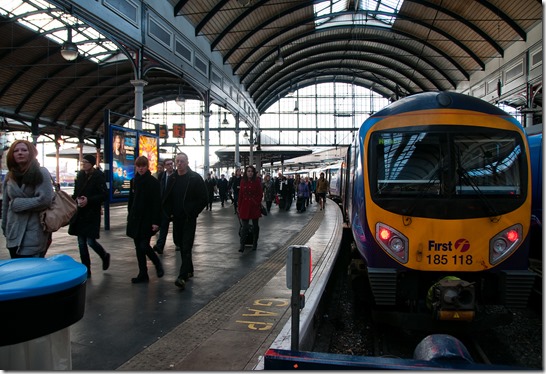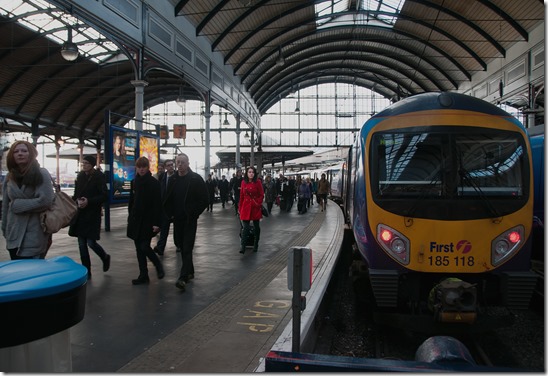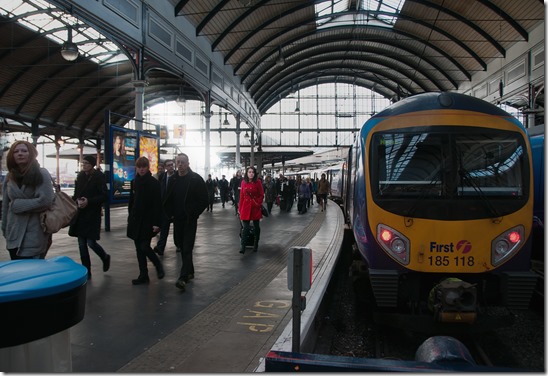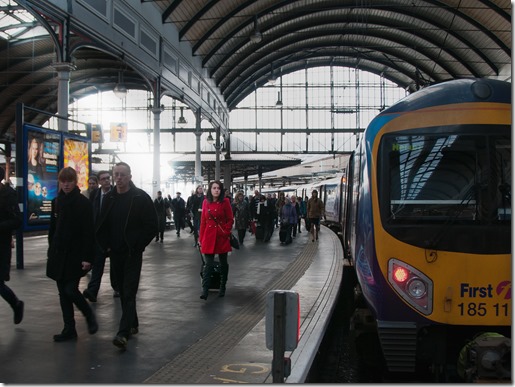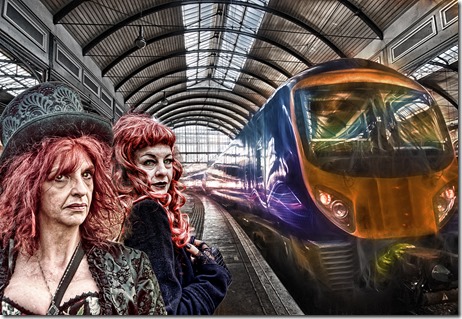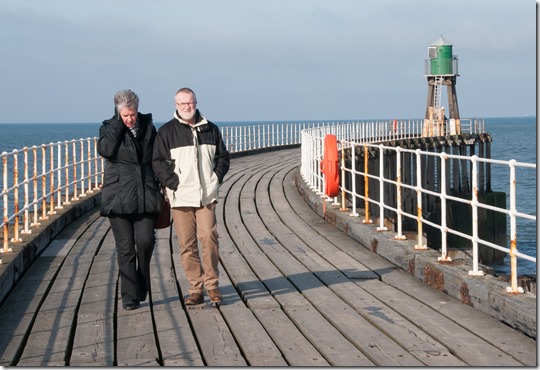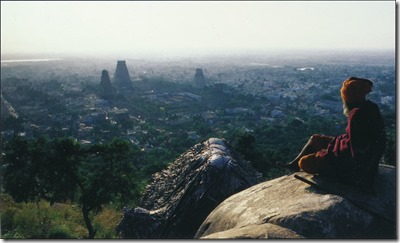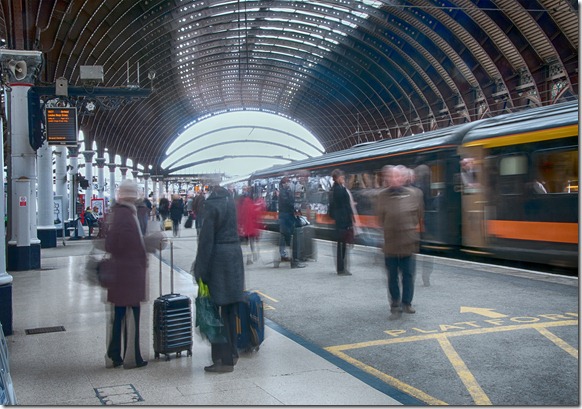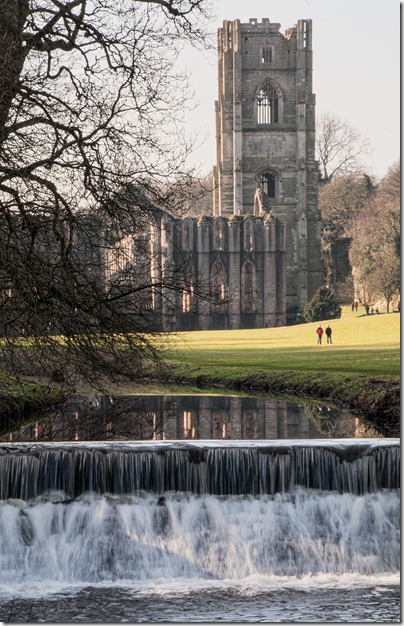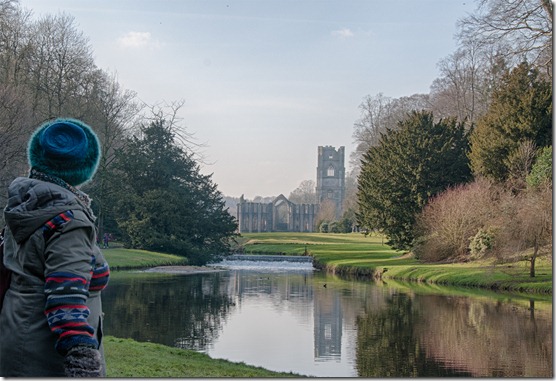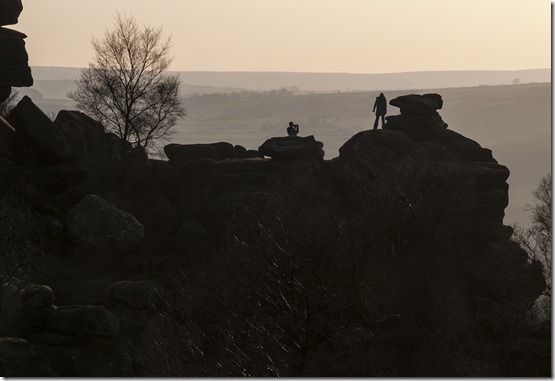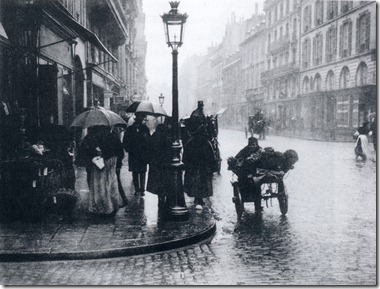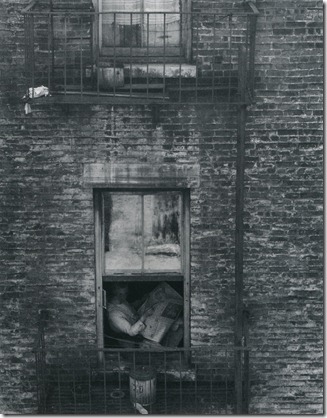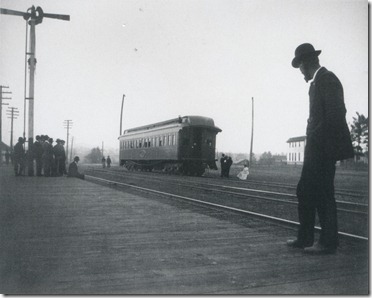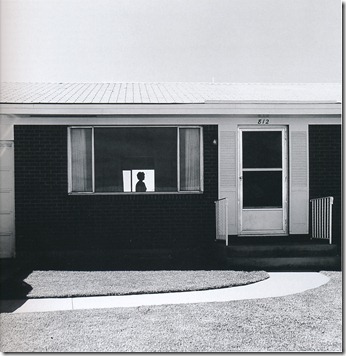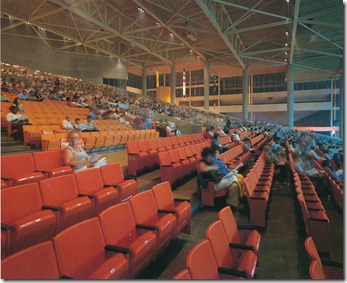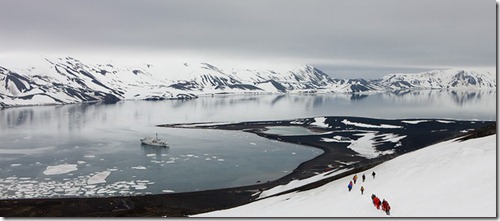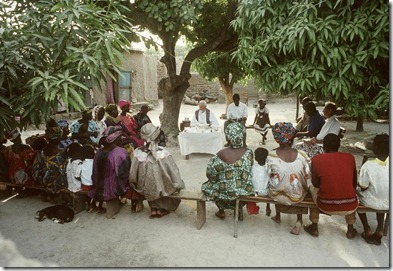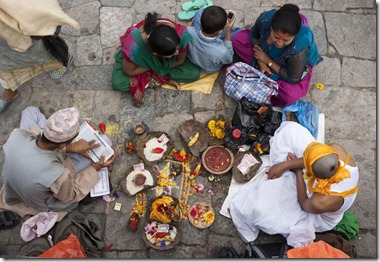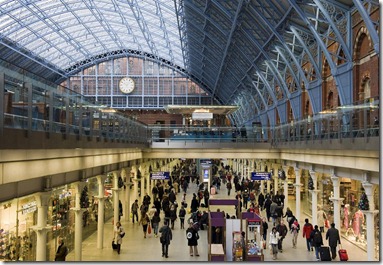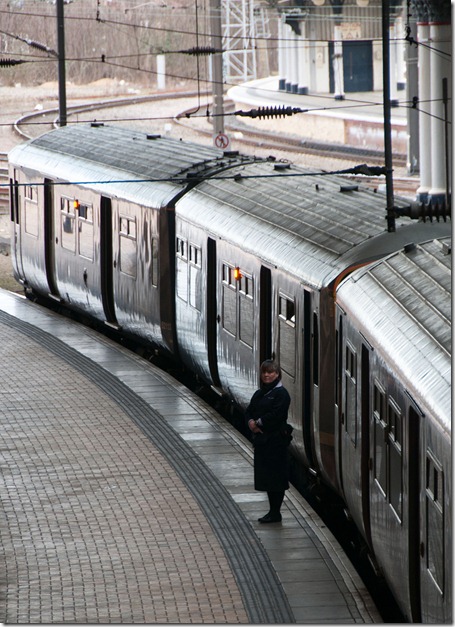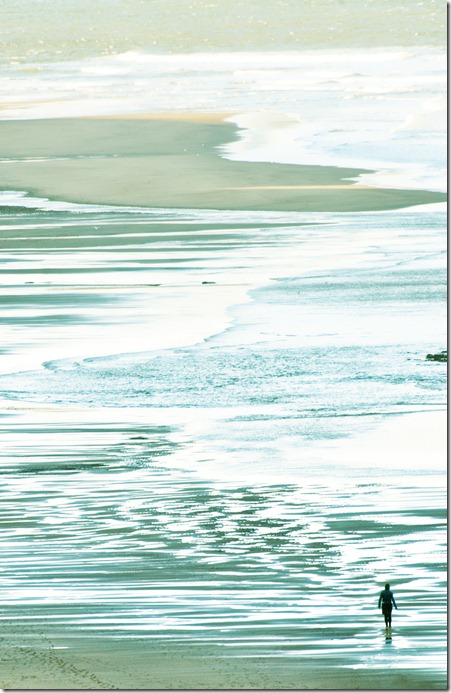‘Street Photography Now’ by Sophie Howarth and Stephen McLaren has many examples of busy situations. Of note are the following:
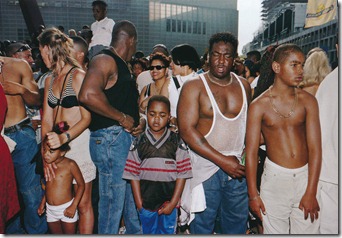
Street scenes of Rotterdam by Otto Snoek.
Here he catches the moments of people as they rush through their busy days. He freezes the movement, using higher shutter speeds and flash.
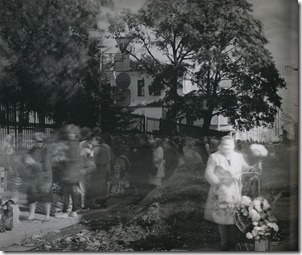
Alexey Titarenko’s images of St Petersburg show the movement of people with the opposite technique, using slow shutter speeds to record their travel.
In Michael Freeman’s ‘The Photographer’s Eye’ there are other examples of busy traffic:
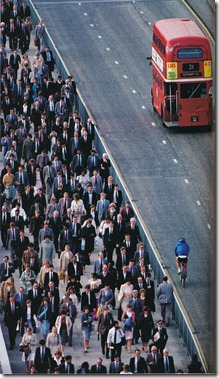
The ‘busyness’ of this image is shown by the perceived movement of the people and the density of the moving crowd. It’s accentuated by the bus and the cyclist travelling in the opposite direction and the space on which they are travelling.
Obviously the perceived movement is what gives this image its impression of a busy crowd, but also it needs to have a reference, which is not travelling in the same direction or is stationary.
All of these images have shown movement to imply ‘busyness’, so with this in mind I’ll look at what techniques can be used to give this impression.
There are various ways of portraying motion:
· Using motion blur, where a slow shutter speed is used while the camera remains fixed (often on a tripod)
· Freezing the motion by using a fast shutter speed – often with a higher ISO
· Panning to follow the moving object so that the background becomes blurred giving the sense of the object’s motion
· Stroboscopic photography is an interesting method, but not one I’m going to try just now, although the results look good!
· Software can also be used to imitate motion – e.g. Photoshop motion blur / Alien Skin Eye Candy 6 – motion trails
Freezing the motion is probably the easiest method. Kevin Steele - http://kevsteele.com – uses this method for most of his ‘active lifestyle’ images. Sometimes a wide aperture is used, so the background blurs to accentuate the main subject’s movement, while other images have a good depth of field suggesting the use of higher ISO settings.
Images by Manuel Cafini - http://whodesignedit.net/photography/people-motion-manuel-cafini - show motion trails, caught by using a black background with his subjects wearing bright, well lit clothing and probably using a rear-curtain flash to freeze the subject at the end of a long exposure. This is motion blur with added punch!
Aaron Storey - http://www.pimshots.com/ - uses a variety of techniques: high shutter speed with a wide aperture, panning and motion blur to catch the motion.
Personally, I find the most attractive results are obtained using slow shutter speeds – I like the blur caused by the movement.
For this exercise I had to travel again –Living out in the sticks is wonderful, but if busy crowds are required then we need to go elsewhere. So this time I chose York. It has a reasonably busy railway station and photography is allowed, provided no flash is used – they do allow the use of tripods. All that is required is to sign in before starting, receiving a short safety brief and then signing out when you’re finished.
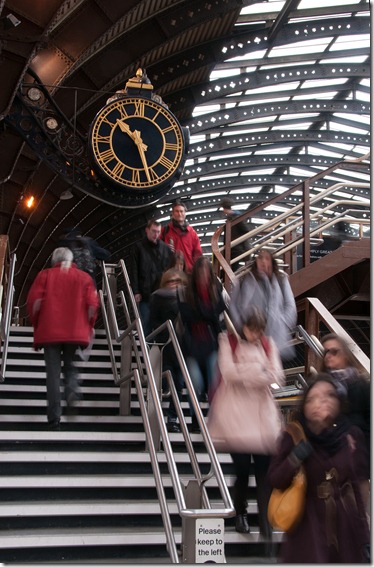
Nikon D300s, 32 mm (EFL 48 mm), ISO-200, f/16, 1/3 sec
Having spent some time watching where people moved when a train arrived I positioned myself near the foot of the stairs from the bridge. It took several exposures to determine the best shutter speed – too long and the movement of people caused lines which didn’t show any features of the passengers; too short and there was no motion blur to be seen.
Using the tripod allowed the fixed items to be sharp leaving the movement of the passengers to create the motion blur.
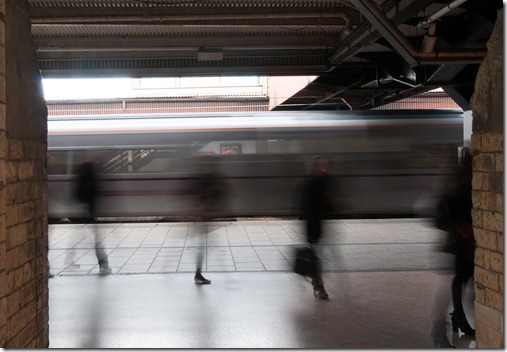
Nikon D300s, 26 mm (EFL 39 mm), ISO-200, f/22, 1/2 sec
I took this one as passengers were arriving on one platform as a train was passing on another line. With the train travelling in the opposite direction to the people I thought their movement may be exaggerated. This shows the effect of using a shutter speed that is a little too slow – the passengers’ features are barely discernible. I like the image, but I don’t think it fills the criteria for the exercise.
Moving back into the shopping area of York I hoped to catch some excited shoppers – not to be at this time of year, but I was lucky enough to catch this image as a group of boys ran through Parliament Street.
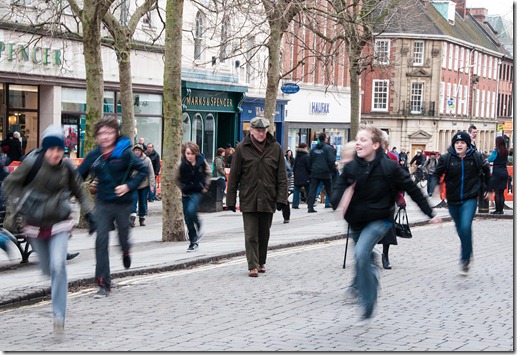
Nikon D300s, 60 mm (EFL 90 mm), ISO-200, f/10, 1/25 sec
I was using the camera without a tripod here, so the aperture was reduced to allow faster shutter speeds. With the vibration reduction switched on a shutter speed of 1/25 sec is easily managed. The speed that the boys were travelling produced enough blur at this setting while the elder couple in the road and the rest of the scene stayed in reasonably sharp focus.
Using a faster shutter speed I captured this image in Scarborough on a Saturday morning – this is as busy as it gets there.
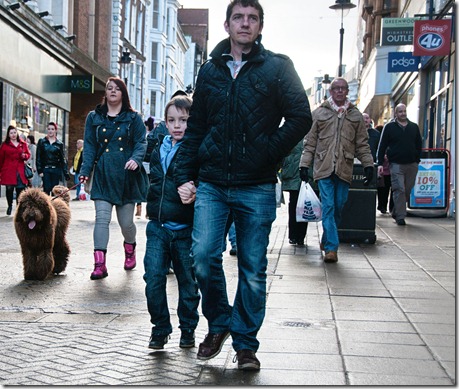
Nikon D300s, 42 mm (EFL 63 mm), ISO-200, f/5.6, 1/200 sec
There’s a reduction in the depth of field at this setting, but it allows much faster shutter speeds, so it’s easier to catch the moment. I shot from a low angle to emphasize the legs – the dog was a bonus! I used single frame tone mapping to bring out detail in the dark areas, particularly the boy’s face and the dog. Shooting into the light would have given a high contrast result which I wasn’t looking for.

